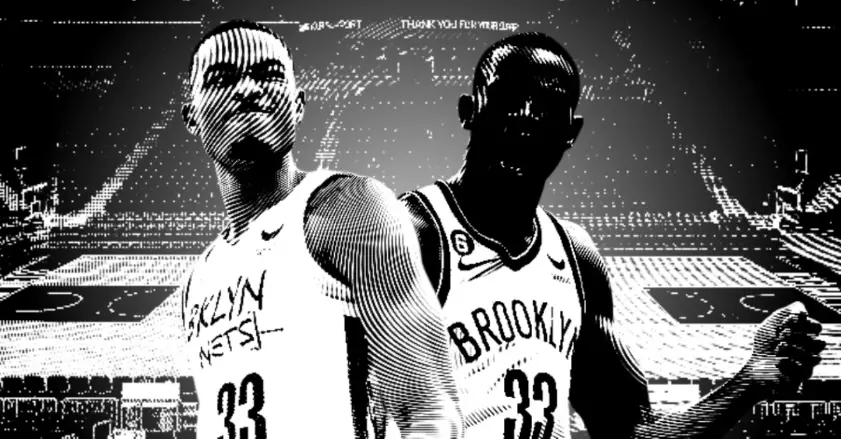Before Wednesday’s loss to the Chicago Bulls (who, weirdly, are 6-1 against Eastern heavyweights Boston, Brooklyn, and Milwaukee, and 11-20 against everyone else), the Nets had ripped off a 12-game winning streak that had them looking like the actualized version of themselves everyone’s been waiting for (a soft schedule didn’t hurt, either, but you can only play whoever’s in front of you).
Since December started, the Nets have been a top-10 defense and a top-10 defensive rebounding team. Nic Claxton’s development keys both improvements.
Most Improved Player doesn’t go to players like Nic, which is a shame, because in his fourth year, Claxton’s game has grown along with his biceps.
After losing a substantial amount of weight due to illness at the beginning of last season, Claxton rededicated himself to the weight room in the offseason, and it’s paying off. Always a good switch defender, Claxton is now significantly better in the paint on both ends. His defensive rebounding rate improved. His foul rate has decreased. His finishing — well, he went from already good to leading the league in FG%. The cherry on top? Claxton is second in the league in blocks per game, averaging 2.5.
Advanced stats regularly paint Claxton as one of the best defenders in the league this year: RAPTOR, EPM, Defensive Win Shares, etc., etc. He has developed into an Adebayo-style Swiss Army knife, capable of switching onto a guard and recovering back to protect the rim in a second. But fleetness is no longer his defining attribute. Instead, Claxton can now absorb even the burliest shoulders to the chest without giving an inch:
Yes, that’s Nic casually stonewalling Zion Williamson into submission; no big deal.
But Claxton’s defense is a reasonably known commodity at this point (he’ll garner serious consideration for an All-Defensive Team this year — he rightfully thinks he deserves it). Nic’s increased mass has also helped his screening game — Claxton is averaging more than three screen assists per game (the highest of his career on a per-minute basis), which is more impressive than it sounds, considering that Durant and Kyrie don’t go to the pick-and-roll nearly as often as other ballhandlers. He used to struggle as a screener to absorb contact, but Claxton’s added bulk ensures that he’s the one dealing the pain this year:
Relatedly, Claxton has developed awesome pick-and-roll chemistry with Kevin Durant in particular — Durant has 47 assists to Clax, more than half-again as much as KD’s 28 to second-place Kyrie. He’s a dunk machine, but like his predecessor Brooklyn center, Jarrett Allen, Claxton has developed underrated finishing abilities: hooks and floaters that he’s comfortable launching from either side of the court.
My favorite Claxton quirk: he must lead the league in shots where he’s facing the other hoop:
He’s become a more reliable two-way player, someone who coach Jacque Vaughn trusts so much that Claxton is playing nearly 30 minutes per game, up from 20 last year. The one issue holding Claxton back from being an all-game player is a familiar one, and something his new strength can’t help with: the man cannot hit his free throws.
Claxton’s shooting a paltry 46% from the charity stripe, an untenable number at the end of games. It’s unfortunate, as his skillset is irreplaceable within the Nets’ current roster. The silver lining? The Nets have killed teams with Kevin Durant at center by straight-up blitzing the opposition on offense. If Claxton can continue this productivity in the first three-and-a-half quarters, however, the Nets won’t find themselves in too many late-game pickles, anyway.
We already know that Durant and Irving are The Guys for the Nets. But despite all the hoopla around Ben Simmons, the newly-jacked Nic Claxton has emerged as the Nets’ third-best player, and the team is far better for it.
If you enjoyed this article, please subscribe to basketballpoetry.com to have more delivered directly to your mailbox every Tuesday and Friday! Also, please follow me on Twitter @bballispoetry. Thanks!

